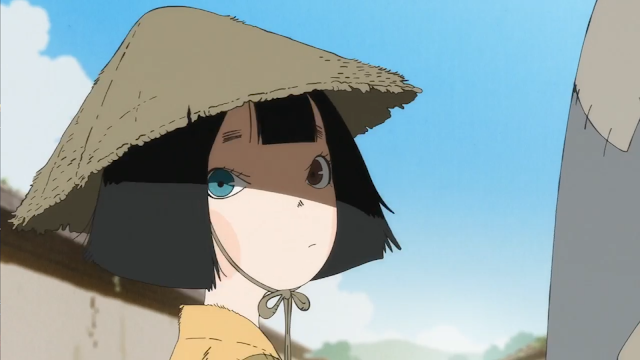The Heike Story: A Compelling, Beautiful Tale of Fate, War, and Impermanence
 |
| Image: Science SARU |
From the first frame, The Heike Story sets itself
apart. This isn't an action-packed samurai spectacle—it’s a
reflective, almost dreamlike meditation on power, destiny, and loss. The story
follows Biwa, a young girl gifted (or cursed) with the ability to see
glimpses of the future. Taken in by the powerful Taira (Heike) clan after her blind
father is slain, Biwa becomes both an observer and an unwilling
participant in their rise and inevitable fall. Through her eyes, we witness the
tragic unravelling of a dynasty too blinded by its own glory to see the storm
approaching.
At its core, The Heike Story isn’t just about war and
politics—it’s about people. Taira no Shigemori,
the noble-hearted heir, emerges as the emotional anchor of the series. He sees
the folly of his family’s arrogance yet struggles to change their doomed
trajectory. His relationship with Biwa is one of quiet understanding, a
bond forged in the knowledge that they both carry burdens they cannot escape.
 |
| Image: Science SARU |
Other standout performances include Saori Hayami (Spy X Family, Demon Slayer) as Tokuko, the Heike daughter caught between privilege and fate, and Subaru Kimura (Akudama Drive, Doraemon) as the ruthless Taira no Kiyomori, a patriarch whose ambition blinds him to the coming tragedy. Each voice actor breathes life into their roles, making the Heike feel less like distant historical figures and more like real people grappling with choices, consequences, and destiny.
Visually, The Heike Story is a living painting.
Yamada and Science SARU craft a world where colours bleed into each other like
memories slipping away. The animation flows with an almost ethereal grace,
emphasizing emotion over action. Golden sunsets, rippling water, and fluttering
cherry blossoms aren’t just background details—they are constant, silent
reminders of transience, of the fleeting nature of power and life itself.
The music, composed by Kensuke Ushio, is
nothing short of hypnotic. The delicate, melancholic soundtrack lingers like an
afterthought, heightening the series’ already poetic atmosphere. Traditional
instruments mix with modern, almost ambient soundscapes, reinforcing the
feeling that The Heike Story exists in a space between history and
legend.
What makes The Heike Story so striking is its inevitability.
Even if you don’t know the history behind the Heike clan, the show
makes one thing painfully clear: their fate is sealed from the very beginning.
Every act of hubris, every moment of unchecked ambition, every refusal to
listen to reason—it all compounds, leading to the clan’s eventual downfall. And
yet, the show doesn’t treat history with cold detachment. Instead, it asks us
to grieve for these characters, to recognize their humanity even as they march
toward destruction.
 |
| Image: Science SARU |
Biwa, as the series’ lone voice of warning, serves as
an audience surrogate in many ways. She knows how this story ends, just as we
do, but she still bears witness, still clings to hope even as the tides of
history refuse to be turned. Her presence adds a layer of bittersweet
inevitability, reminding us that knowing the future doesn’t mean you can change
it.
The Heike Story is not for the faint of heart, nor
for those expecting a straightforward historical drama. It’s slow,
introspective, and deeply poetic—a series that doesn’t just tell a story but immerses
you in its sorrow. With Naoko Yamada’s delicate direction, Science SARU’s
stunning artistry, and a hauntingly evocative score, this adaptation turns an
ancient war epic into a deeply human tragedy.
Like the Heike themselves, this anime leaves behind
something beautiful before vanishing into the waves of history. It’s not just a
show—it’s a requiem. And once you’ve experienced it, you won’t forget it.
Catch this anime masterpiece now streaming on Crunchyroll


